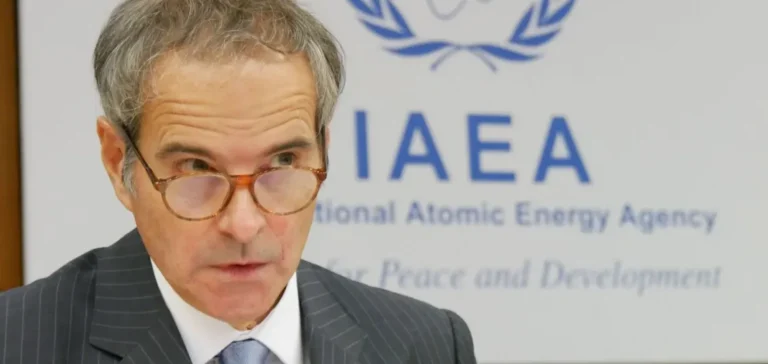The Director General of the International Atomic Energy Agency (IAEA), Rafael Grossi, has called on Iran to significantly improve its cooperation with international inspectors. Since the June airstrikes targeting several Iranian nuclear sites, the United Nations organisation has not been granted access to the Fordo, Natanz and Isfahan facilities.
Rafael Grossi confirmed that the IAEA had conducted a dozen inspections on Iranian territory since the outbreak of the armed conflict with Israel, but none involved the sensitive infrastructure affected by the strikes. He reiterated that Iran remains a signatory to the Treaty on the Non-Proliferation of Nuclear Weapons (NPT), which requires strict compliance with transparency obligations regardless of any military or political context.
Enriched uranium still present in the facilities
According to IAEA assessments, nearly all of Iran’s enriched uranium stockpile, including uranium enriched to 60%, remains at the damaged nuclear sites. The agency also reported that material enriched to 20%, 5% and 2% is still stored at these facilities. Rafael Grossi stated that the continued presence of such material, although not immediately usable for military purposes, is a major point of concern in the absence of regular inspections.
The Director General also stressed that the conflict does not justify a partial withdrawal from international commitments. “You cannot claim to comply with the NPT while refusing the obligations it imposes,” he said, adding that the agency risks losing all visibility on the stockpiles if access remains blocked.
Tehran relaunches nuclear programme despite threats
Iranian President Masoud Pezeshkian declared that the country would rebuild its nuclear facilities with greater capacity, while reaffirming that Iran does not seek nuclear weapons. Foreign Minister Abbas Araghchi, for his part, said that Iran would not engage in direct talks with the United States over its nuclear or ballistic programmes, insisting on the country’s right to enrich uranium.
Washington maintains a firm position. US President Donald Trump has threatened to strike the facilities again if Iran attempts to reactivate the targeted infrastructure. Israeli authorities said the June strikes aimed to slow the progress of Iran’s nuclear programme, which they consider incompatible with civilian use.
Inspection blockage and growing uncertainty
The lack of access to nuclear sites directly affects the IAEA’s ability to verify the exclusively peaceful nature of Iran’s nuclear programme. Meanwhile, Iran continues to assert that its facilities are intended for civilian purposes, while developing enrichment capabilities approaching military-grade levels.
The dispute between Iran and international oversight bodies, combined with deteriorating relations with Western countries, continues to fuel tensions surrounding the Islamic Republic’s nuclear programme. The situation further increases uncertainty in an already unstable geopolitical region.






















